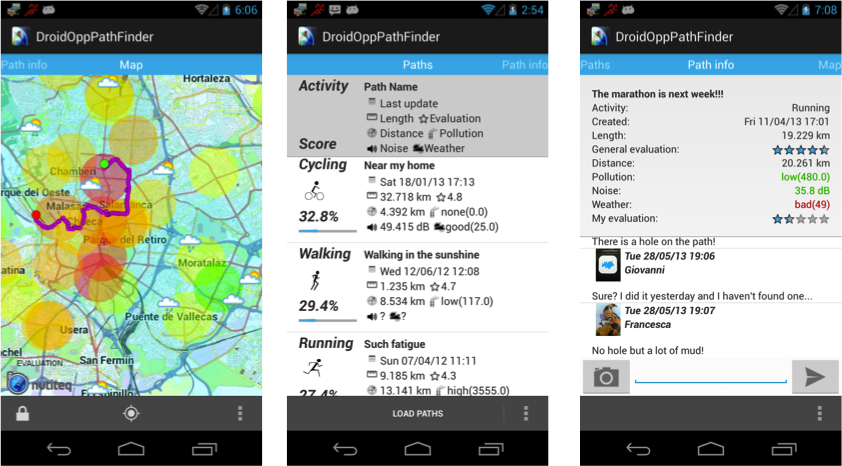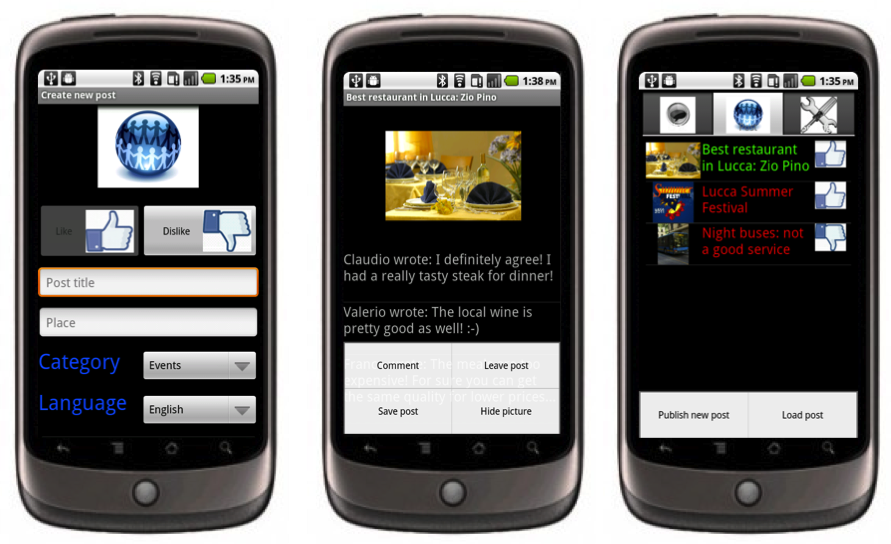Mobile Social Networks to improve the QoL and User Experience
Mobile Social Networks (MSN)
inherit the basic sharing and exchange features of Online Social
Networks (e.g., Facebook, Twitter) and further extend their application
scenario by exploiting the physical interaction’s opportunities
among personal devices generated by user mobility and opportunistic
communications. MSN are
related to the current situation of the involved users, relying on
contents dynamically generated and not
currently available on standard Internet services.
In this way, MSN go beyond the virtual world of online social
networks, generally based on existing social relationships (e.g.,
friends, friend of friends), by stimulating additional social
interactions also among unknown users sharing interests and needs.
MSNs are both people centric, mapping human social interactions on
the physical network of electronic devices, and content centric,
providing efficient services for content dissemination following the
users’ interests and their current conditions. Different MSN
applications can belong to apparently independent domains but they
can be integrated in order to improve the general user experience
and QoL. CAMEO allows this by providing a single common framework
for all these applications, with general context- and social-aware
features.
We developed two practical examples of MSN on top of CAMEO:
DroidOppPathFinder: aimed to share information about paths for fitness activity in a select area, and to recommend the local user with the best path related to his/her personal preferences and path properties. Each mobile device running DroidOppPathFinder is able to collect real-time sensing data both from embedded sources (e.g., GPS and other local sensors) and from available external sources (e.g., air pollution sensor networks, weather stations). In addition, the application collects user generated contents regarding the paths as multimedia posts and comments and the personal user’s evaluation.

Tourist-MSN: designed to improve people experiences during tourist visits by allowing individuals to create, collect, and share useful information, through asynchronous posts or real-time chat, related to geo-located points of interest (POIs).

For technical details please see Publications.